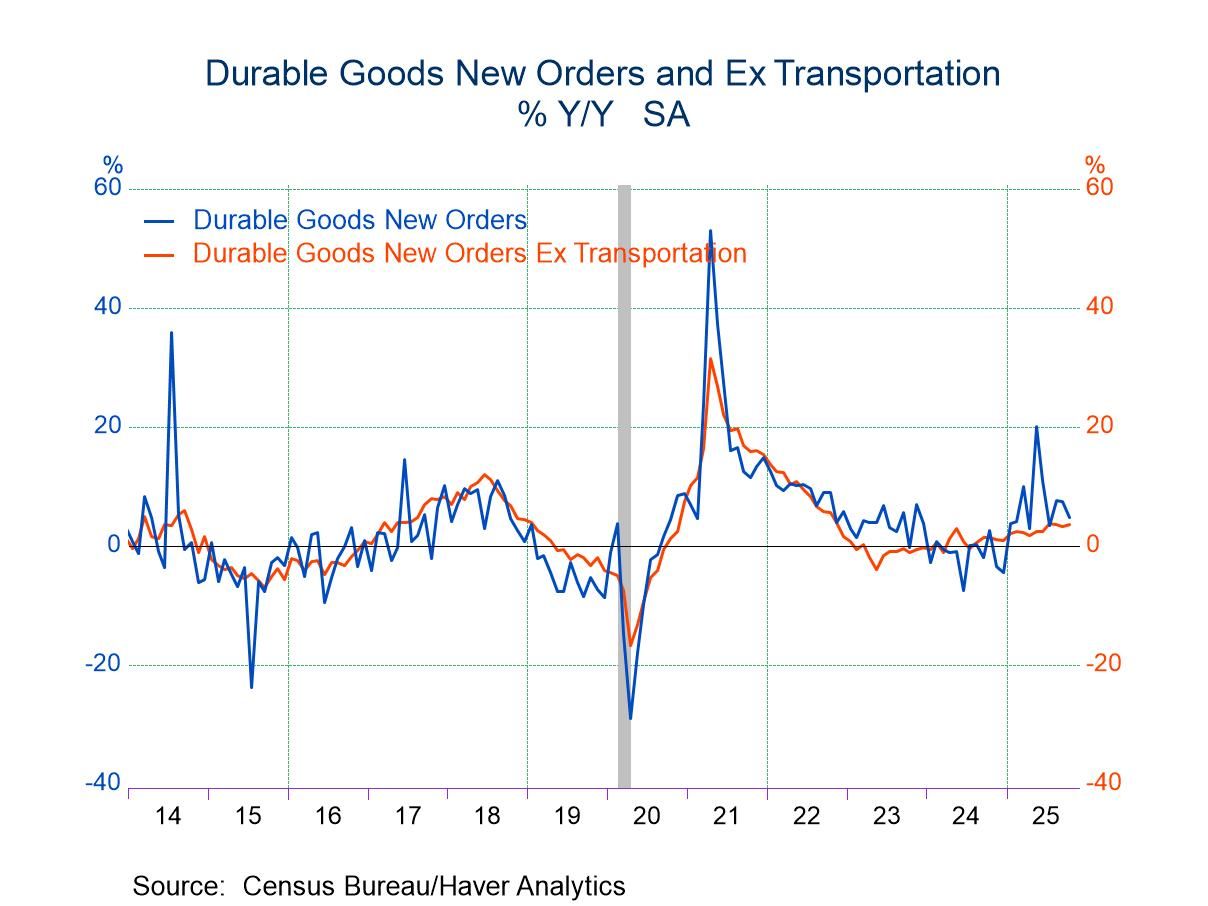U.S. Chicago Business Barometer Shows Some Recovery, but Still Under 50
Summary
-
Order backlogs move up above 50, to 53.7.
-
Production up modestly to 39.2.
-
Employment down to 40.8.
The ISM-Chicago Purchasing Managers Business Barometer recovered moderately in December after its fall in November. The overall PMI index was 44.9, up from 37.2 which had marked a drop from October’s 45.2. Haver Analytics has constructed an ISM-adjusted index with methodology similar to the national ISM Composite Index; for December, that measure was 45.0, up from 44.7 in November. These overall indexes, which are below the break-even 50 level, still indicate that activity is decreasing, but by less than in November. The December improvement still leaves the survey results weaker than many months through September. However, the December result is better than had been expected in the Action Economics forecast survey, which called for a reading of 40.0.
The recovery in the overall December index reflects advances in several basic components, especially order backlogs, which registered 53.7, up from 36.1 in November and the highest since last June’s 55.2. The backlog increase was accompanied by increases in new orders from 30.7 to 44.1 and in production from 35.9 to 39.2. So clearly production remains relatively weak, but it didn’t slow as much in December has it had in November. Supply delivery times then lengthened to 52.7 from 49.9.
Three of the sub-indexes did slow in December. Inventories were 48.0, down from 59.8. Employment was 40.8, down from 47.1 and prices paid were 64.1 down from 66.2. This last item obviously still reflects substantial inflationary pressure, just somewhat less than in November and, indeed, markedly less than the recent high of 94.1 in October 2021. So there is still certainly inflationary pressure.
The Chicago Business Barometer is considered to be a leading indicator of the U.S. economy. Readings above 50 indicate expansion while those below 50 suggest contraction. Summary data are contained in Haver’s USECON database with detail, including the ISM-style index, in the SURVEYS database. The expectation figure from the Action Economics Forecast Survey is in the AS1REPNA database.
Carol Stone, CBE
AuthorMore in Author Profile »Carol Stone, CBE came to Haver Analytics in 2003 following more than 35 years as a financial market economist at major Wall Street financial institutions, most especially Merrill Lynch and Nomura Securities. She had broad experience in analysis and forecasting of flow-of-funds accounts, the federal budget and Federal Reserve operations. At Nomura Securities, among other duties, she developed various indicator forecasting tools and edited a daily global publication produced in London and New York for readers in Tokyo. At Haver Analytics, Carol was a member of the Research Department, aiding database managers with research and documentation efforts, as well as posting commentary on select economic reports. In addition, she conducted Ways-of-the-World, a blog on economic issues for an Episcopal-Church-affiliated website, The Geranium Farm. During her career, Carol served as an officer of the Money Marketeers and the Downtown Economists Club. She had a PhD from NYU's Stern School of Business. She lived in Brooklyn, New York, and had a weekend home on Long Island.





